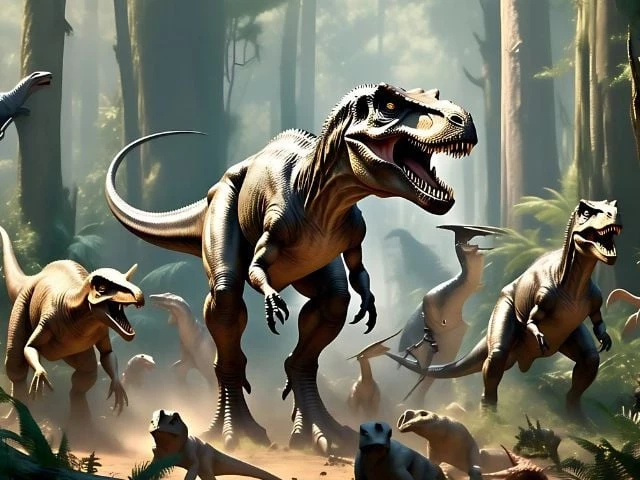T Rex walked to North America from Asia via land bridge: study
Research opens the door to new fossil discoveries in unexplored Asian regions

The direct ancestors of Tyrannosaurus rex likely migrated from Asia to North America via a land bridge around 70 million years ago, according to a new study that adds weight to a long-standing paleontologists debate.
Researchers led by Cassius Morrison, a doctoral student in palaeontology at University College London (UCL), used mathematical modelling to conclude that the ancestors of T. rex crossed what is now the Bering Strait, between Siberia and Alaska.
The findings support earlier research suggesting that T. rex was more closely related to Tarbosaurus, a large Asian carnivore, than to other North American predators such as Daspletosaurus.
At the time, the land bridge would have been covered in temperate rainforests, with a climate similar to that of modern-day British Columbia, Morrison told
Because apex predators like tyrannosaurids were relatively scarce compared to herbivorous dinosaurs, they were also less likely to be preserved in the fossil record, Morrison explained.
To overcome this lack of physical evidence, the team built models incorporating fossil data, family lineage, and environmental conditions.
These models allow for gaps in the fossil record and can be revised if new discoveries emerge.
The results suggest that fossils of early T. rex relatives may still remain undiscovered in Asia.
The study also examined how T. rex and its close relatives grew so large. Researchers found that tyrannosaurids experienced rapid size increases during a period of global cooling.
This may have been aided by traits such as warm-bloodedness or feathers, enabling them to thrive in colder climates.
Their growth followed the extinction of another group of giant predators— carcharodontosaurids—around 90 million years ago. This created an ecological gap at the top of the food chain.
By the end of the Cretaceous Period, T. rex could have weighed up to 9 metric tonnes—comparable to a large African elephant or light tank.
Charlie Scherer, a co-author and Earth sciences graduate from UCL, said the findings help explain how the largest tyrannosaurs came to dominate both North and South America.
Palaeontologist Steve Brusatte of the University of Edinburgh, who was not involved in the study, praised the work as a detailed examination of how dinosaur evolution aligned with climate shifts.
“It was easier to be big when temperatures were cool,” Brusatte said. “The kings of the dinosaurs were not predestined to rule, but were helped along by the climate.”










1701351241-1/Afghan-refugees-(3)1701351241-1-208x130.webp)












COMMENTS
Comments are moderated and generally will be posted if they are on-topic and not abusive.
For more information, please see our Comments FAQ